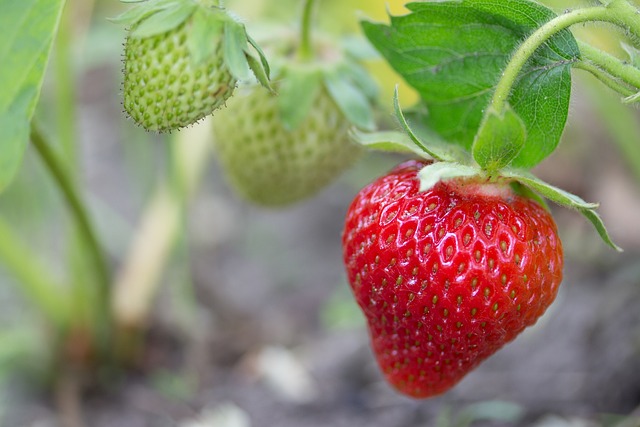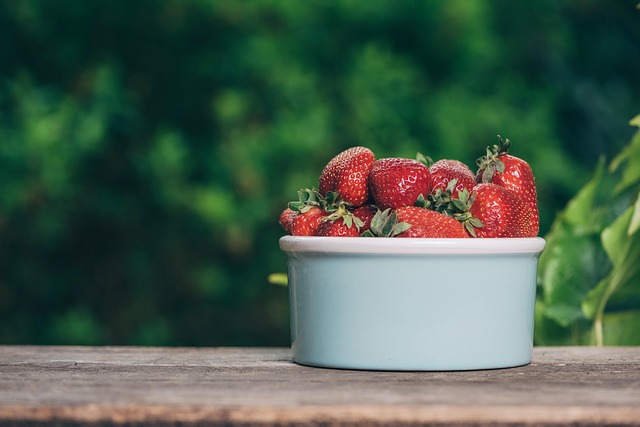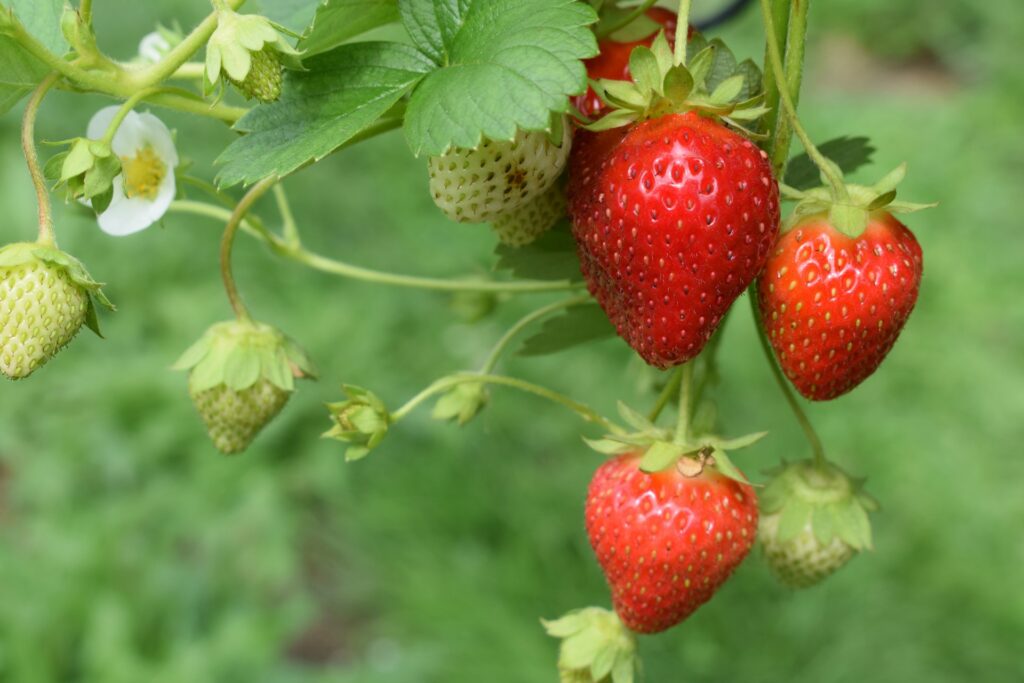Growing strawberries can be a rewarding experience, whether you’re aiming for a small garden patch or a large-scale production. Strawberries are relatively easy to grow, and with the right care, they can produce a bountiful harvest. Here’s a step-by-step guide on how to grow strawberries successfully.
Choosing the Right Strawberry Varieties
Strawberries come in three main types:
June-bearing: These produce one large crop per year, typically in June. They are great for a big harvest.
Everbearing: These produce two to three harvests per year, usually in the spring, summer, and fall.
Day-neutral: These varieties produce fruit continuously throughout the growing season.
Choose a variety that suits your climate and growing season. For example, June-bearing strawberries are ideal for regions with a short growing season, while day-neutral varieties are better for areas with longer growing seasons.
Preparing the Soil
Strawberries thrive in well-drained, sandy loam soil with a pH between 5.5 and 7.0. Here’s how to prepare your soil:
Test the Soil: Use a soil test kit to check the pH and nutrient levels.
Amend the Soil: Add organic matter, such as compost or well-rotted manure, to improve soil structure and fertility.
Ensure Good Drainage: Raised beds or mounds can help improve drainage, preventing root rot.
Planting Strawberries
Planting strawberries at the right time and depth is crucial for their growth.
When to Plant: In colder regions, plant strawberries in early spring. In warmer regions, they can be planted in the fall.
Spacing: Space plants about 12-18 inches apart in rows that are 3-4 feet apart.
Planting Depth: Plant strawberries so that the crown is just above the soil surface. Planting too deep can cause the crown to rot.
Watering and Mulching
Strawberries need consistent moisture, especially during fruiting. Here’s how to keep them hydrated:
Watering: Provide about 1 inch of water per week. Water at the base of the plants to keep the foliage dry and prevent disease.
Mulching: Apply mulch around the plants to conserve moisture, suppress weeds, and keep the fruit clean.
Straw, pine needles, or black plastic mulch work well.
Fertilizing
Strawberries are heavy feeders and benefit from regular fertilization.
Pre-Planting: Incorporate a balanced fertilizer (10-10-10) into the soil before planting.
Ongoing Fertilization: Fertilize with a balanced fertilizer once a month during the growing season. Avoid high-nitrogen fertilizers as they can promote excessive foliage growth at the expense of fruit production.
Controlling Pests and Diseases
Common pests and diseases can affect strawberry plants, so vigilance is key.
Pests: Watch out for aphids, slugs, and spider mites. Use insecticidal soap or neem oil for control.
Diseases: Prevent fungal diseases like powdery mildew and gray mold by ensuring good air circulation and avoiding overhead watering.

Harvesting and Storing Strawberries
Knowing when and how to harvest strawberries ensures you get the best flavor and quality.
Harvesting: Pick strawberries when they are fully red and ripe. Gently twist and pull the berry from the stem.
Storing: Store strawberries in the refrigerator for up to a week. For longer storage, freeze the berries by spreading them on a baking sheet to freeze individually, then transferring them to a freezer bag.
Winter Care
In colder climates, strawberries need protection from harsh winter conditions.
Mulching: Apply a thick layer of straw mulch over the plants after the first frost to protect them from freezing temperatures.
Removing Mulch: In spring, remove the mulch gradually as the weather warms up.
With the right care and attention, growing strawberries can be a fruitful and enjoyable endeavor. By choosing the right varieties, preparing the soil properly, and following best practices for planting, watering, fertilizing, and pest control, you can enjoy a bountiful harvest of delicious strawberries year after year.
Propagating Strawberries
Strawberries can be propagated to expand your garden or replace old plants.
Runners: Most strawberry plants produce runners, which are long stems with small plants (daughter plants) at the end. Allow a few runners to root in the soil, then transplant them to a new location.
Division: In early spring or after fruiting, divide healthy, mature plants. Dig up the plant, separate the crowns, and replant them immediately.
Rotating Crops
To maintain soil health and reduce disease risk, rotate your strawberry crops every 3-4 years. Avoid planting strawberries in the same spot where other berries or solanaceous crops (like tomatoes, peppers, and potatoes) have grown recently, as they can share similar diseases.
Pruning and Renovating
Regular pruning and renovation keep strawberry plants healthy and productive.
After Harvest: Trim off old leaves after the last harvest. This helps control pests and diseases.
Renovation: For June-bearing varieties, mow or cut back the foliage to 1-2 inches above the crowns after harvest. Thin out plants to 6-8 inches apart to encourage new growth.
Container Gardening
Strawberries can also be grown in containers, which is ideal for small spaces or patios.
Choosing Containers: Use pots that are at least 12 inches in diameter with good drainage. Hanging baskets and vertical planters are also excellent options.
Soil and Planting: Fill containers with high-quality potting mix and plant strawberries at the same depth as in the ground. Ensure the crowns are just above the soil surface.
Care: Water container strawberries more frequently, as they dry out faster. Fertilize monthly with a balanced liquid fertilizer.
Troubleshooting Common Issues
Here are some common problems and how to address them:
Poor Fruit Production: This could be due to inadequate sunlight, poor soil, or overcrowding. Ensure plants get 6-8 hours of sunlight, improve soil conditions, and thin out crowded plants.
Small or Misshapen Fruits: Often caused by poor pollination or water stress. Encourage pollinators by planting flowers nearby and ensure consistent watering.
Yellow Leaves: This can be a sign of nutrient deficiencies, overwatering, or root diseases. Test soil, adjust watering practices, and treat any identified diseases.

Enjoying Your Harvest
Once you’ve successfully grown and harvested your strawberries, it’s time to enjoy them! Here are some ideas:
Fresh Eating: Nothing beats the taste of fresh, homegrown strawberries. Enjoy them as a snack, in salads, or on top of cereal.
Preserving: Make jams, jellies, or preserves to enjoy the taste of summer all year round.
Baking and Cooking: Use strawberries in pies, tarts, smoothies, and other delicious recipes.
Growing strawberries can be a delightful and rewarding hobby. By following these guidelines on choosing varieties, preparing the soil, planting, caring for, and troubleshooting your strawberry plants, you can enjoy a plentiful harvest of sweet, juicy berries. Whether you’re a seasoned gardener or a beginner, strawberries are a fantastic addition to any garden. Enjoy the process, and savor the fruits of your labor!






